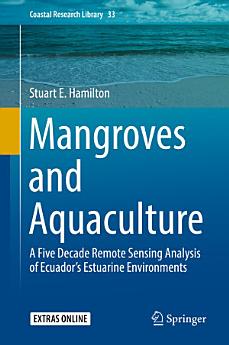Mangroves and Aquaculture: A Five Decade Remote Sensing Analysis of Ecuador’s Estuarine Environments
About this ebook
The book is intended for researchers, academics, graduate students, NGOs, and government actors including those who work in development, environment, and policy implementation. It is suitable supplemental reading for students in courses related to the coastal zone, land use change, and remote sensing. The electronically supplementary material includes all the related data to underpin the analysis as well as all the resulting GIS files.
Ratings and reviews
- Flag inappropriate
About the author
Stuart E. Hamilton is an Associate Professor of Geography in the Department of Geography and Geosciences at Salisbury University in Maryland. He is co-PI on a research team awarded $1.8 million to explore the implications of aquaculture on the wild fisheries of Lake Victoria. He has published extensively on land cover changes related to mangrove forests and aquaculture in journals such as Nature Climate Change, the Annals of the Association of American Geographers, PloS One, and Global Ecology & Biogeography. Also, he has co-authored a book chapter on the remote sensing of mangrove change in the Coastal Research Library Springer book series. He worked for the Ministry of the Environment in Ecuador during 2015 and 2016 on a Prometeo Fellowship studying estuarine processed in the northern estuaries of Ecuador during which time he completed most of the research for this manuscript.







